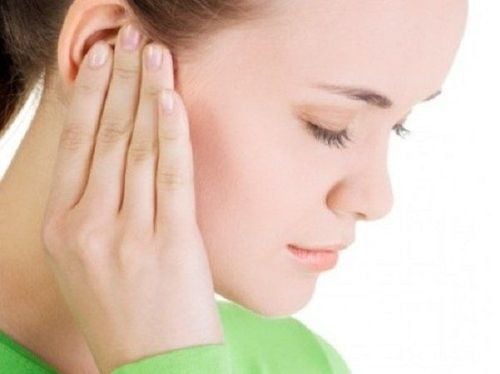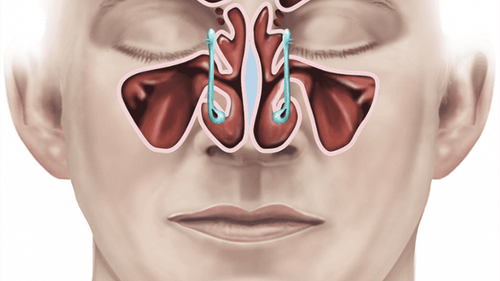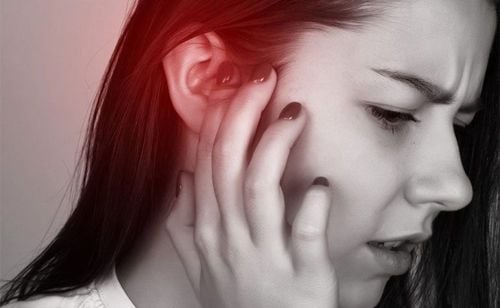This is an automatically translated article.
The article was professionally consulted by Specialist Doctor of Otolaryngology - Department of Medical Examination and Internal Medicine - Vinmec Hai Phong International Hospital.
The eustachian tube can be blocked or obstructed for a variety of reasons. If otitis media is not treated, it will go deeper, leading to otitis media and greatly affecting the patient's health.
1. How long is the eustachian tube?
The eustachian tube is an organ in the human body, whose physiological function is to ensure the balance of pressure between the inside and outside of the eardrum. At the same time, this organ is also responsible for draining secretions in the middle ear out as well as maintaining the operation of the sound transmission system, preventing infection upstream from the pharynx to the middle ear.
The eustachian tube is the part that starts at the back of the nose, borders the roof of the mouth, goes up a little and ends at the middle ear. The space in the middle ear is a hollow part of the skull containing the auditory apparatus, which is usually covered by one side of the eardrum.
In adults, the eustachian tube usually has an average length of 3.6cm; The orifice is 5mm wide, 8mm high and is usually closed to prevent infection and improve drainage. The eustachian tube in adults opens when coughing, sneezing, or when swallowing. These activities cause air from outside to enter the middle ear or from the middle ear to the outside for the purpose of equalizing the pressure of the outside environment with the pressure inside the tympanic cavity.
In children, the eustachian tube is usually straight, horizontal, short, and slightly open. Therefore, this is the reason why bacteria can easily move from the nasopharynx to the middle ear through the tympanic tube, thereby leading to an infection. Meanwhile, because the eustachian tube is horizontal, it is often difficult for the fluid to get out of the middle ear, so it stagnates inside, making the infection worse. As for breastfed babies, the eustachian tube is almost horizontal, without a waist, so it is usually very open.
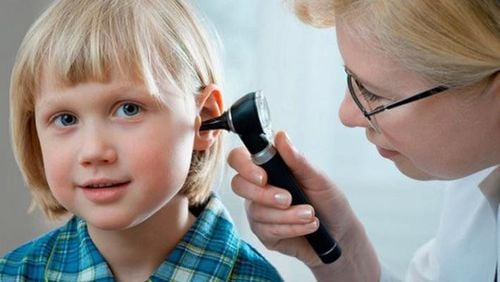
2. Why is the eustachian tube or blocked?
The eustachian tube can be blocked or obstructed for a variety of reasons. One of the reasons why the eustachian tube is often blocked is nasopharyngitis, because during nasopharyngeal inflammation, the lining of the nasopharynx near the entrance to the eustachian tube also swells, thereby leading to blockage of the eustachian tube.
In some more severe cases, bacteria from the nasopharynx into the eustachian tube causes the eustachian tube to become inflamed at the gate, the length of the eustachian tube. If otitis media is not treated, the disease will progress further, leading to otitis media. In addition to the cause of nasopharyngitis due to infection, some of the following causes also cause eustachian tube obstruction:
People with sinusitis and allergic diseases cause the mucosal tissue of the eustachian tube to swell. A stuffy nose can lead to a stuffy ear. The tonsils at the back of the nose are often very close to the eustachian tube, acting as a reservoir for bacteria, which in turn contributes to recurrent ear infections. In addition, people with enlarged tonsils are also at risk of obstructing the tip of the eustachian tube, so people with chronic ear infections are often recommended to have tonsillectomy. In rare cases, the patient has a mass or tumor at the base of the skull or the nasopharynx that can lead to obstruction of the eustachian tube, from which inflammation of the eustachian tube often occurs. Changing weather is also an extremely favorable environmental factor for pathogenic bacteria and viruses to be active while the child's resistance is weak. In some cases, breastfed babies often have eustachian tubes, caused by the supine position that causes fluid to drain into the middle ear. In addition, when blowing your nose, crying, diving or when flying up and down, it can create high positive pressure in the nasopharynx, from which the fluid from the nasopharynx flows back into the middle ear, causing inflammation of the tympanic membrane. In summary, there are many causes of tubal occlusion, other causes of the disease can also be due to too small tubes (common in children with Down syndrome). However, these patients often find that the ear is blocked, but not continuously.
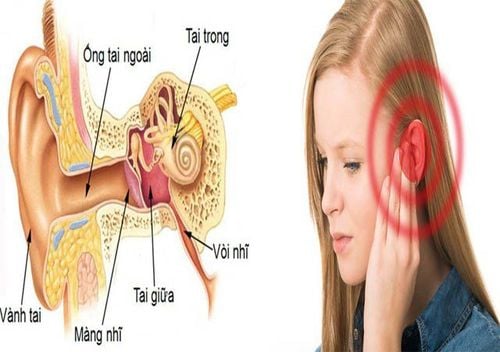
3. How to treat tubal occlusion?
Occlusion of the tympanic membrane often leads to complications of otitis media. The main symptoms of the disease are tinnitus with a popping or bursting sound in the ear, moderate hearing loss, and a feeling of being stuck and full in the ear. On examination of the ear, the eardrum was concave, the handle of the hammer was horizontal posteriorly and more prominent, as well as the loss of the light triangle. Therefore, when seeing these signs and symptoms, the patient needs to go to a medical facility for examination and treatment.
Usually, the treatment of tubal occlusion depends on the cause of the disease. Specifically, if the cause of tubal occlusion is sinusitis or tonsillitis, then tonsillitis and sinusitis must be treated thoroughly. Some other procedures that can also be performed to improve eustachian tube function and to help equalize air pressure are as follows:
Swallowing can alleviate symptoms of discomfort for the patient because the act of swallowing will Helps activate the muscle behind the throat to open the eustachian tube. Therefore, any activity that promotes swallowing may help open the eustachian tube, for example by allowing the patient to chew gum, drink or eat. In some cases, yawning is more effective because it uses more muscles. Take a deep breath and blow out: In case if the ear still feels full, the patient can try forcing the eustachian tube by taking a deep breath and blowing out, while combining with squeezing the nostrils. and close your mouth. When you feel a "pop" sound, it means you have succeeded. If the problems associated with tubal occlusion persist despite the above methods, it is best to see your doctor. Especially to prevent this disease, it is best to:
Delay your flight or take alternative means if you have a cold, sinusitis, ear infection or allergies. Besides, people with tube problems should not do activities such as scuba diving because it can cause pain and in some cases can be dangerous for the patient. Children can't open their eustachian tubes on their own, so when flying, parents can give them a bottle or a pacifier to help balance the air pressure more easily. Especially only blowing your nose when the nose is clear, because if the nose is blocked, but trying to blow will cause the dirty fluid to go back up the faucet, thereby bringing bacteria into the tympanic cavity, causing otitis media. In addition to using the drug according to the doctor's prescription, people with blocked tubes need to be examined again on schedule and follow the doctor's advice on diet, rest as well as daily activities... to the disease heals quickly.
To examine and treat ENT problems in general and eustachian tube disease in particular, you can go to the Ear - Nose - Throat specialist - Vinmec International General Hospital. Currently, Vinmec is one of the leading prestigious hospitals in the country, trusted by a large number of patients for medical examination and treatment. Not only the physical system, modern equipment: 6 ultrasound rooms, 4 DR X-ray rooms (1 full-axis machine, 1 light machine, 1 general machine and 1 mammography machine) , 2 DR portable X-ray machines, 2 multi-row CT scanner rooms (1 128 rows and 1 16 arrays), 2 Magnetic resonance imaging rooms (1 3 Tesla and 1 1.5 Tesla), 1 room for 2 levels of interventional angiography and 1 room to measure bone mineral density.... Vinmec is also the place to gather a team of experienced doctors and nurses who will greatly assist in diagnosis and detection. early signs of abnormality in the patient's body. In particular, with a space designed according to 5-star hotel standards, Vinmec ensures to bring the patient the most comfort, friendliness and peace of mind.
Please dial HOTLINE for more information or register for an appointment HERE. Download MyVinmec app to make appointments faster and to manage your bookings easily.




